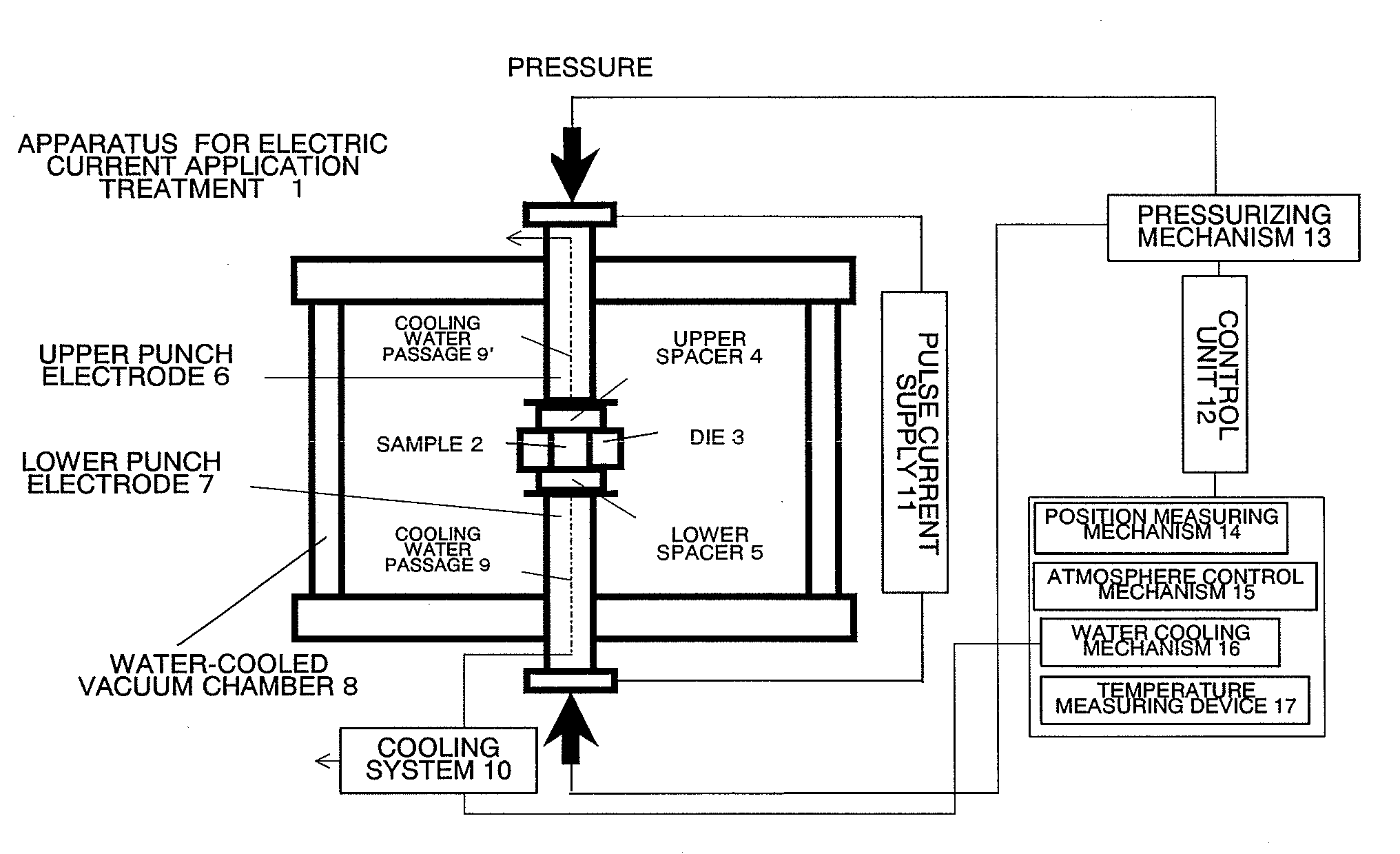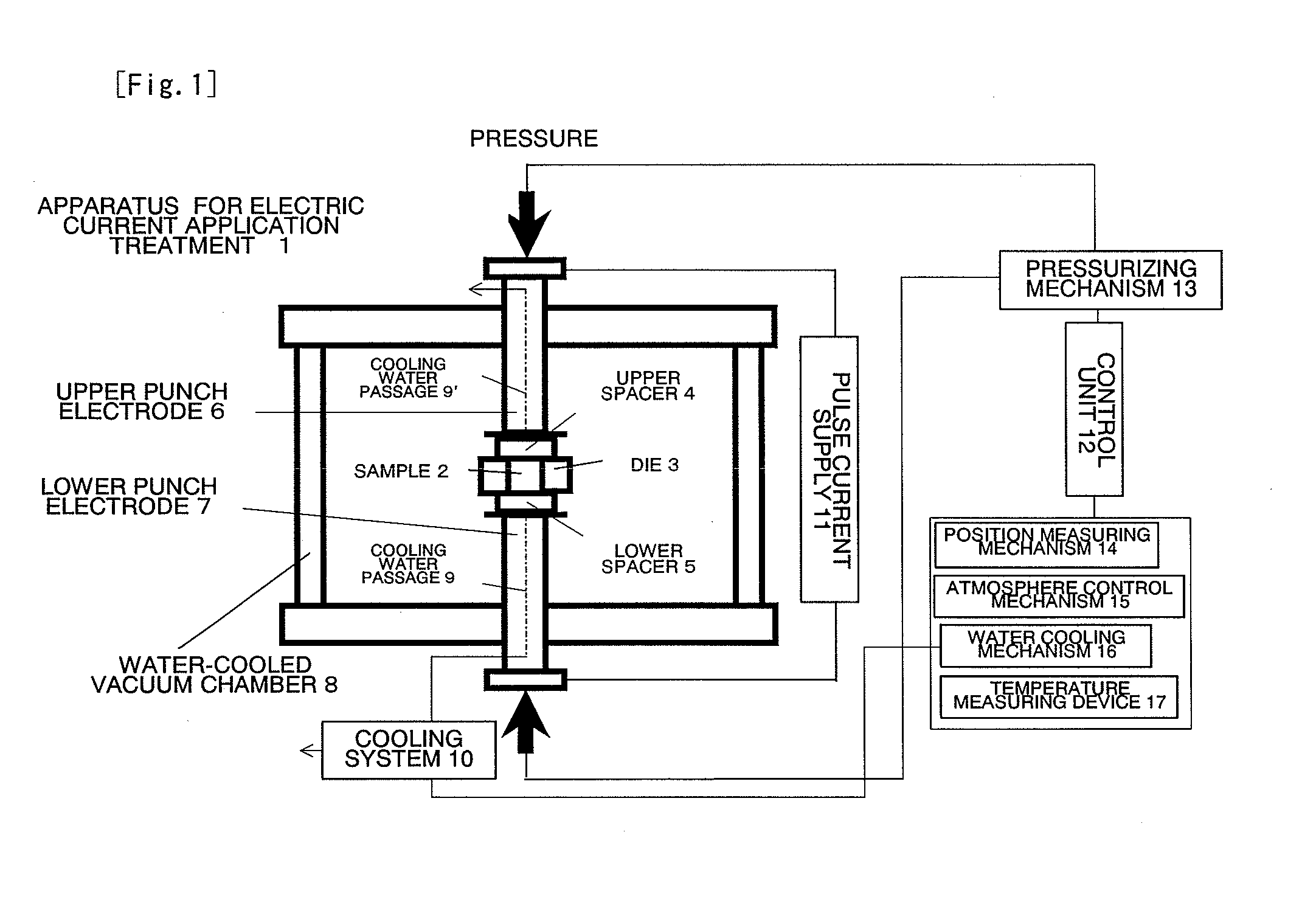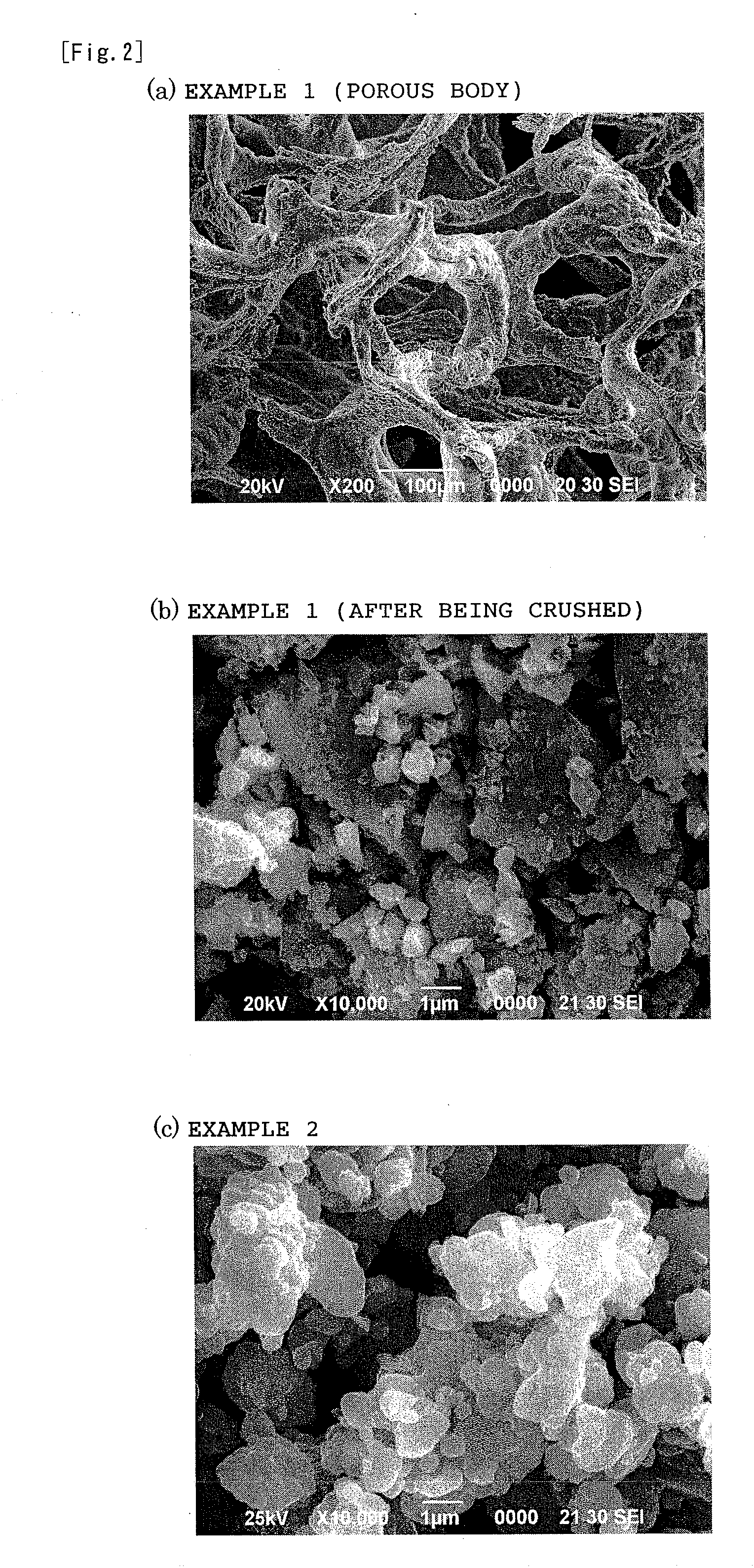Process for producing metal sulfide
a technology of metal sulfide and production process, which is applied in the direction of cobalt sulfide, cell components, electrochemical generators, etc., can solve the problems of low conductivity of elemental sulfur, difficult control of the composition of a product, and inability to increase the capacity of the positive electrode of the currently available lithium secondary battery. , to achieve the effect of short time, easy production and efficient production
- Summary
- Abstract
- Description
- Claims
- Application Information
AI Technical Summary
Benefits of technology
Problems solved by technology
Method used
Image
Examples
example 1
[0061]A foamed nickel (with a thickness of about 1 mm) having a porosity of 95% was washed by being immersed in hydrochloric acid, processed into a disk shape having a diameter of about 15 mm, and placed in a cylindrical graphite mold (conductive container) having an inner diameter of 15 mm. Sulfur powder (average particle size is about 20 μm) was uniformly placed in the spaces above and below the foamed nickel so as to provide a molar ratio of Ni:S=1:40. The mold was set in the vacuum chamber 8 of the apparatus for electric current application treatment shown in FIG. 1, the pressure inside the chamber 8 was reduced to about 20 Pa, and then argon gas was introduced until atmospheric pressure was reached.
[0062]Next, the graphite mold (conductive container) 3 was sandwiched between the spacers 4 and 5, which serve as the covers of the mold, from the top and bottom, respectively, and the spacers 4 and 5 were pushed against the graphite mold 3 by the top and bottom punch electrodes 6 an...
example 2
[0074]A foamed nickel having a porosity of 95% (thickness is about 1 mm) was processed into a disk shape having a diameter of about 15 mm, and placed in a cylindrical graphite mold (conductive container) having an inner diameter of 15 mm. Sulfur powder (average particle size is about 20 μm) was uniformly placed in the space above the foamed nickel so as to provide a molar ratio of Ni:S=1:2. The combination in this ratio was defined as one unit, and 10 units were stacked in a layer, and the mold was set in the vacuum chamber 8 of the apparatus shown in FIG. 1. Then, the treatment by applying a pulse current was carried out exactly in the same manner as in Example 1.
[0075]After the treatment, the applied pulse current was switched off and the pressure was released. Then, the mold was allowed to cool naturally to room temperature. Thereafter, the sample was taken out from the mold, and was sufficiently crushed in a mortar. Then, sulfur powder in an amount of ½ of the weight of the sulf...
example 3
[0086]Sponge-like metallic iron (produced by Junsei Chemical Co., Ltd.) (99.99% purity, with an average particle size of about 30 μm) and sulfur powder (with an average particle size of about 20 μm) were mixed to provide a molar ratio of Fe:S=1:2. This mixture was uniformly placed in a graphite mold having an inner diameter of 15 mm, and set in the vacuum chamber 8 of the apparatus shown in FIG. 1. Thereafter, the treatment by applying a pulse current was carried out exactly in the same manner as in Example 1.
[0087]The graphite mold was heated at a rate of about 10° C. / minute, and reached 600° C. about 1 hour after the start of pulse current application. After maintaining the graphite mold at this temperature for about 10 minutes, applied electric current was switched off and the pressure was released. Then, the graphite mold was allowed to cool naturally.
[0088]The graphite mold was cooled to room temperature, and then the sample was taken out from the mold and crushed. The sample w...
PUM
| Property | Measurement | Unit |
|---|---|---|
| temperature | aaaaa | aaaaa |
| melting point | aaaaa | aaaaa |
| melting point | aaaaa | aaaaa |
Abstract
Description
Claims
Application Information
 Login to View More
Login to View More - R&D
- Intellectual Property
- Life Sciences
- Materials
- Tech Scout
- Unparalleled Data Quality
- Higher Quality Content
- 60% Fewer Hallucinations
Browse by: Latest US Patents, China's latest patents, Technical Efficacy Thesaurus, Application Domain, Technology Topic, Popular Technical Reports.
© 2025 PatSnap. All rights reserved.Legal|Privacy policy|Modern Slavery Act Transparency Statement|Sitemap|About US| Contact US: help@patsnap.com



